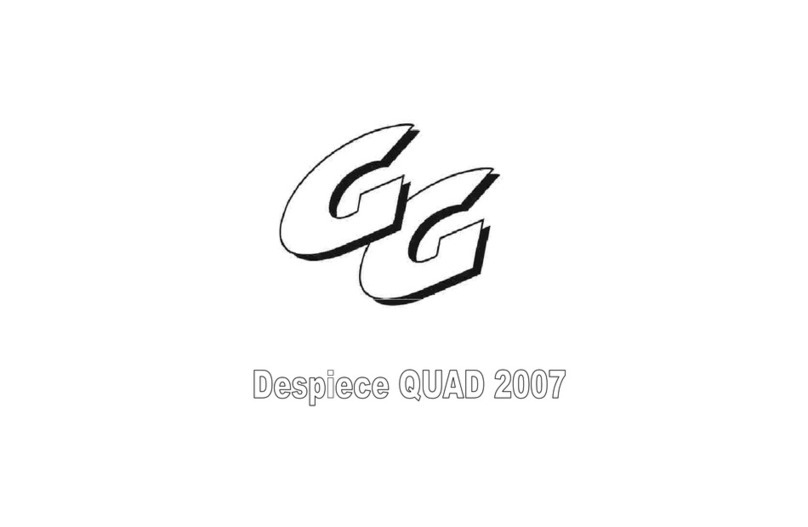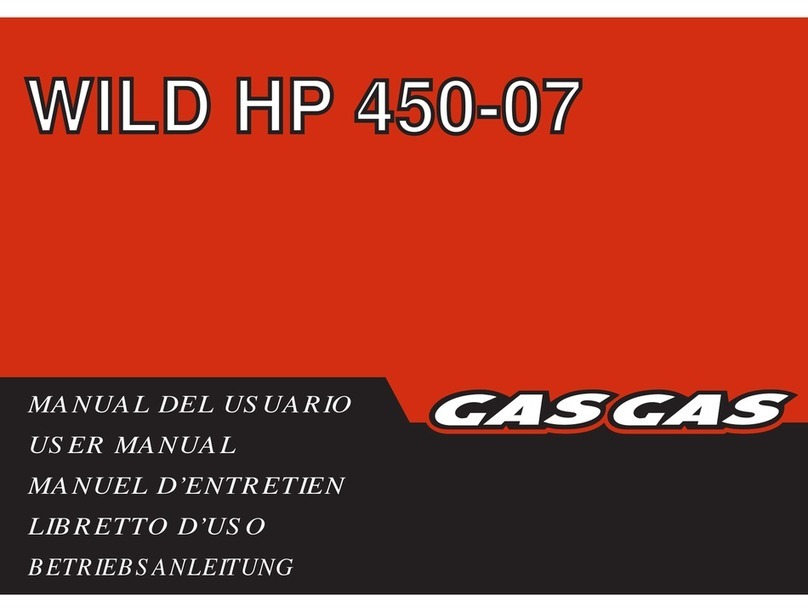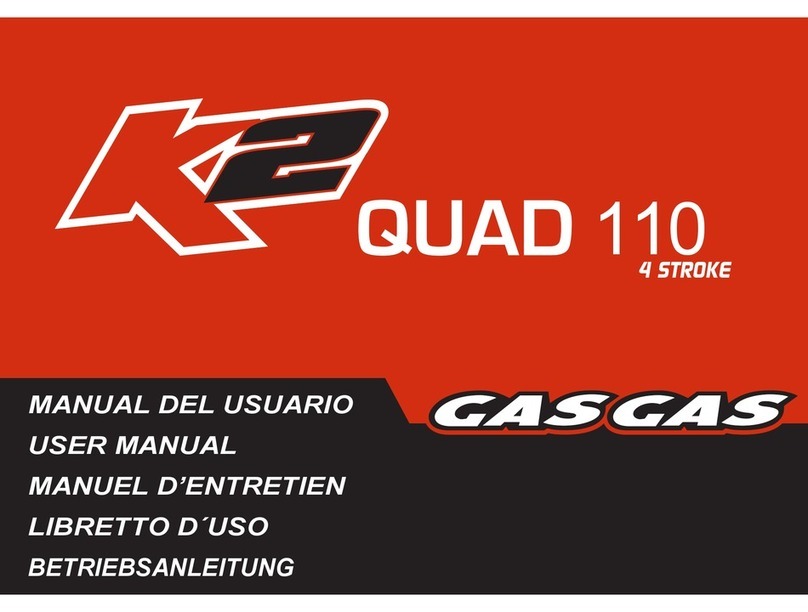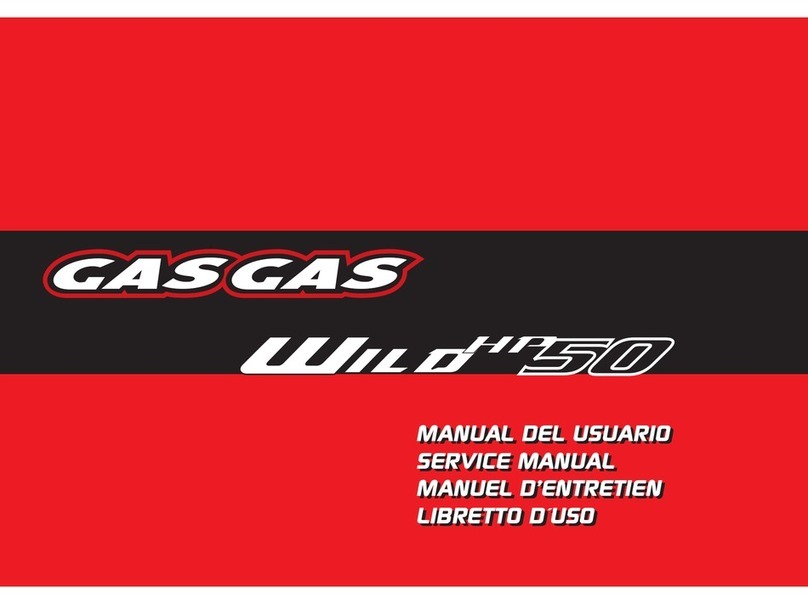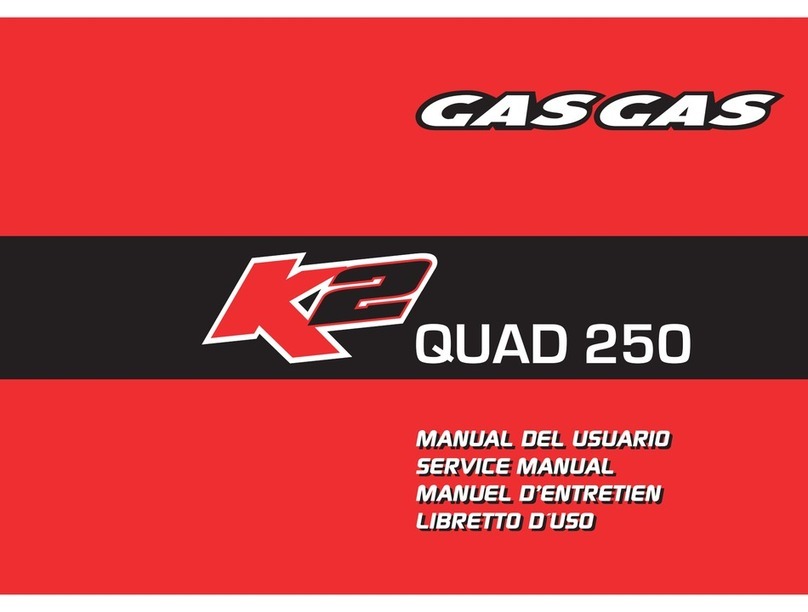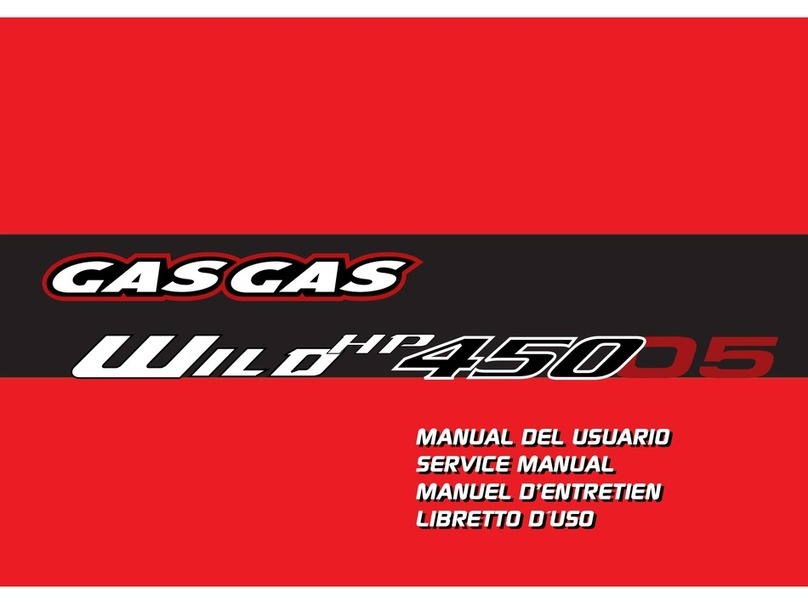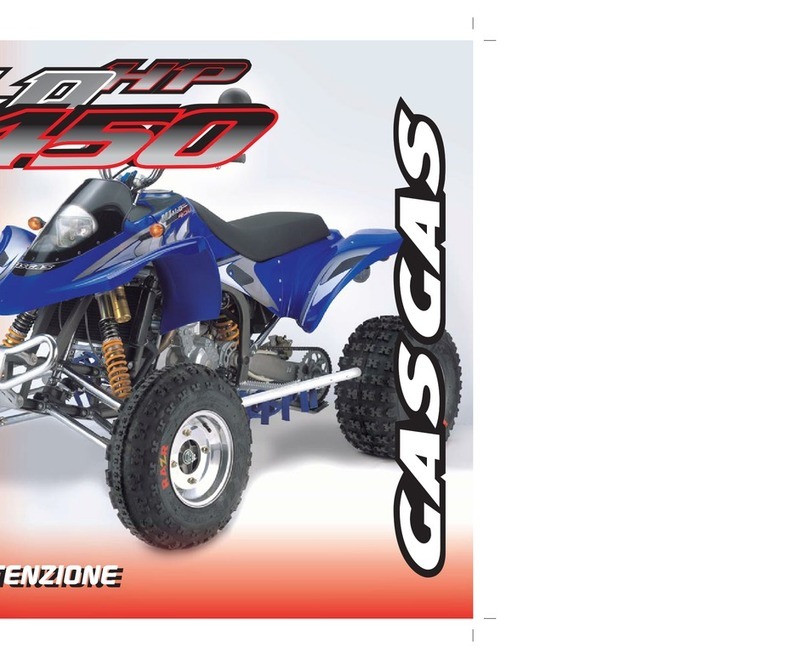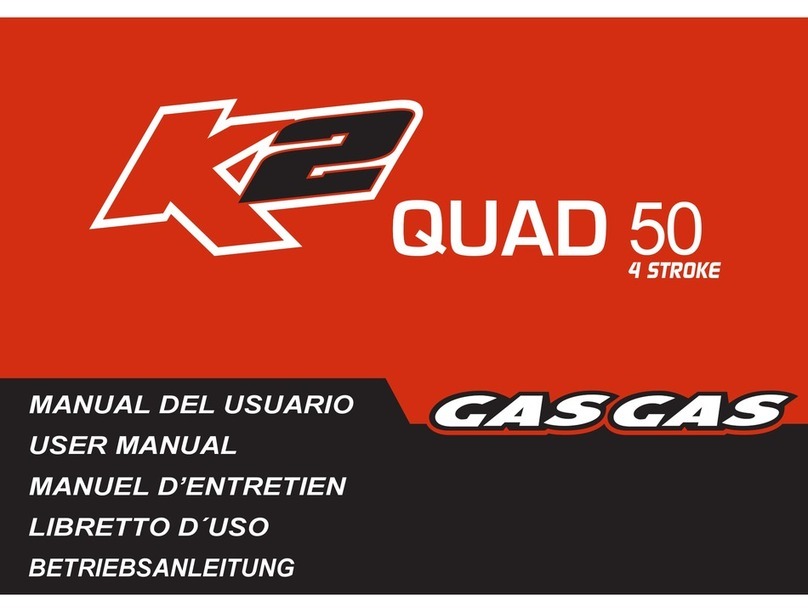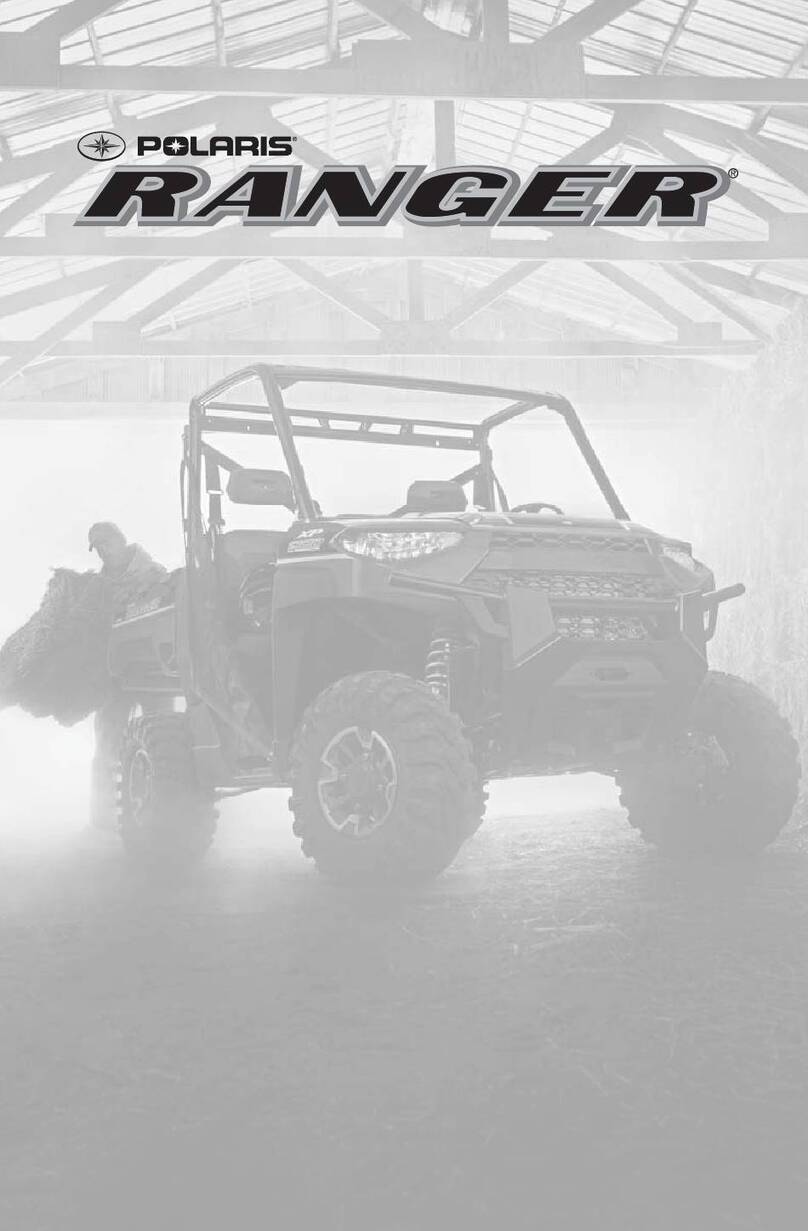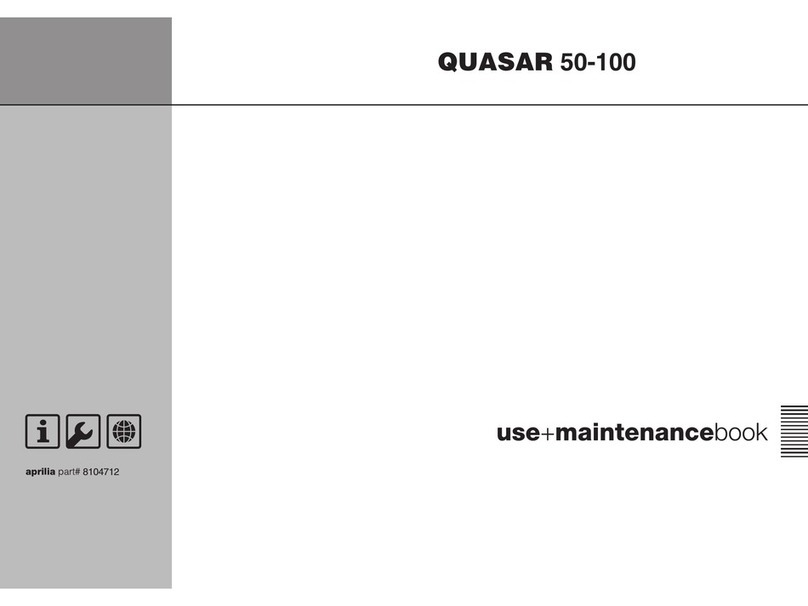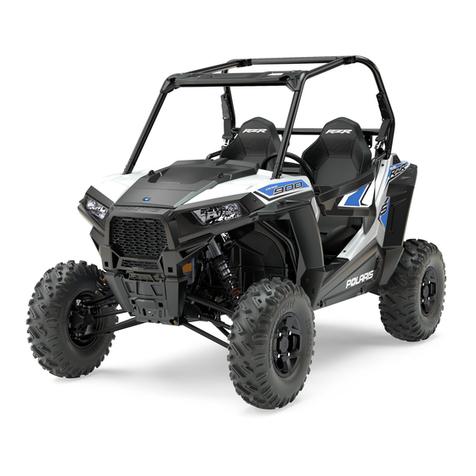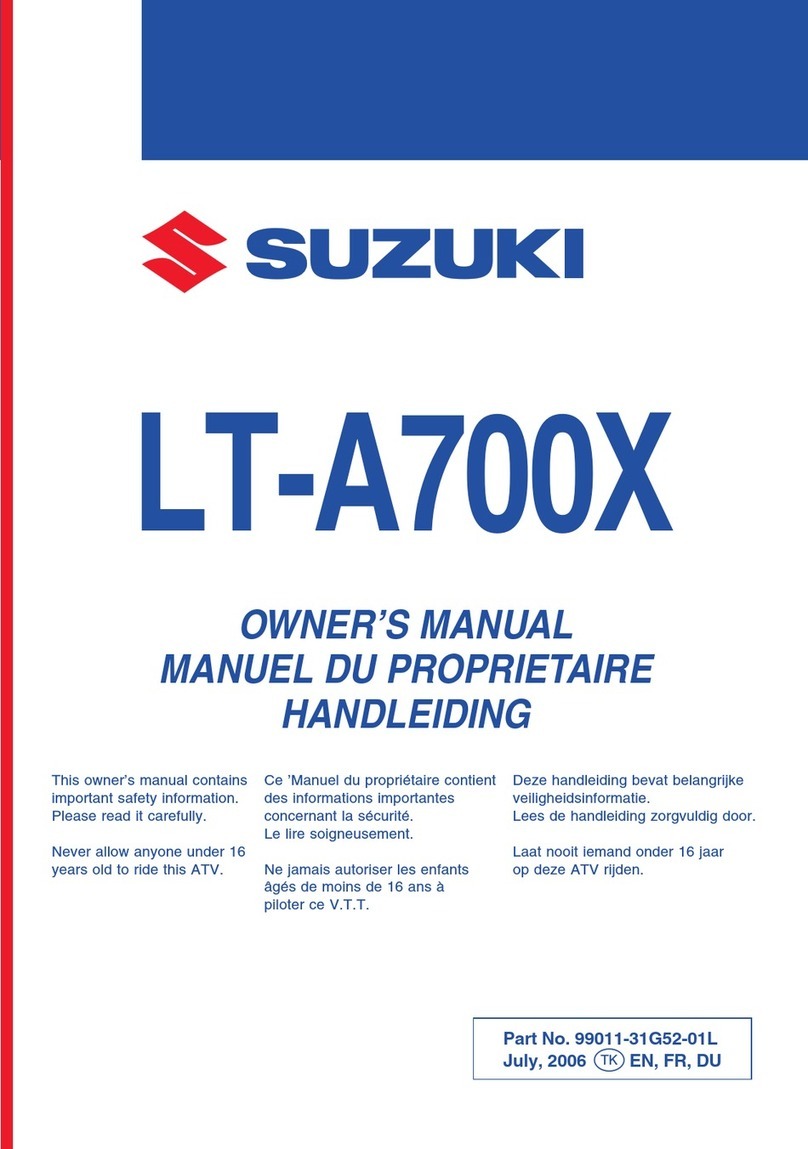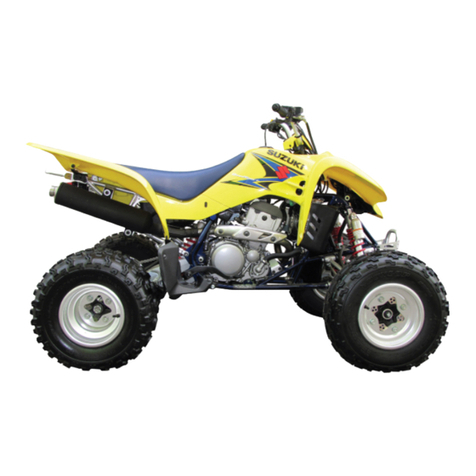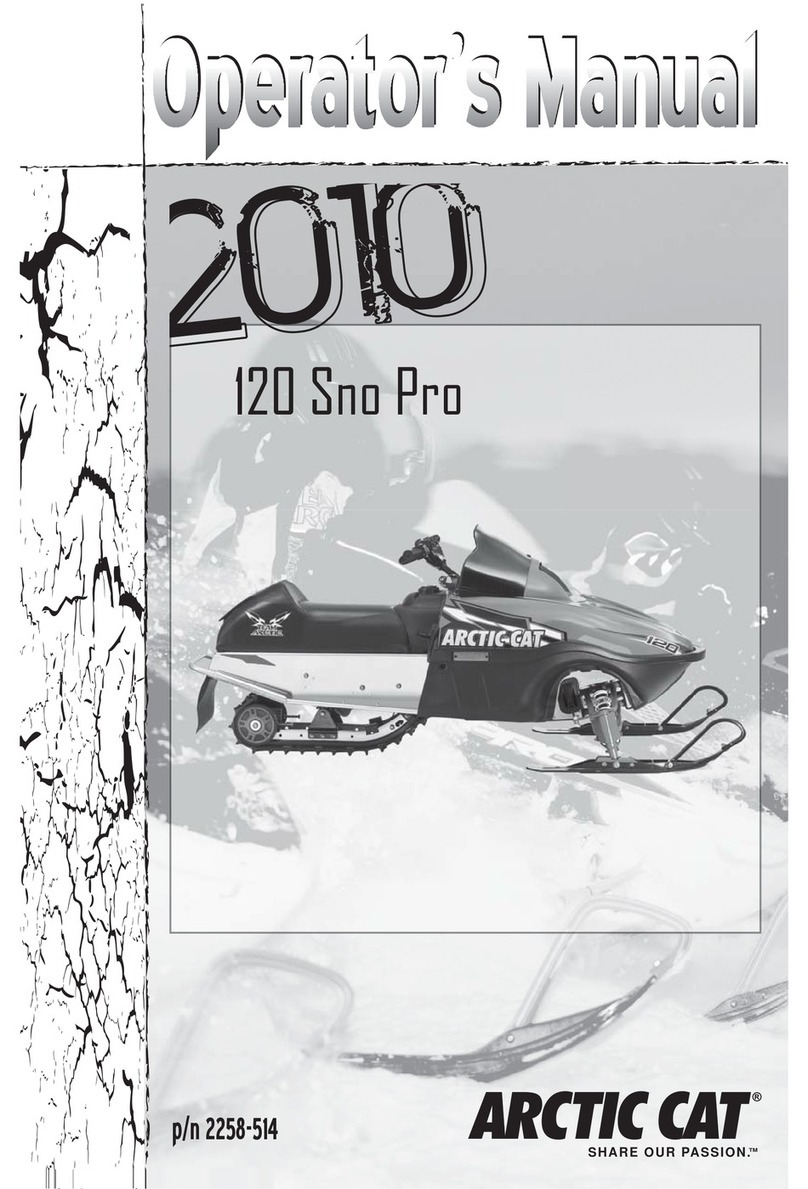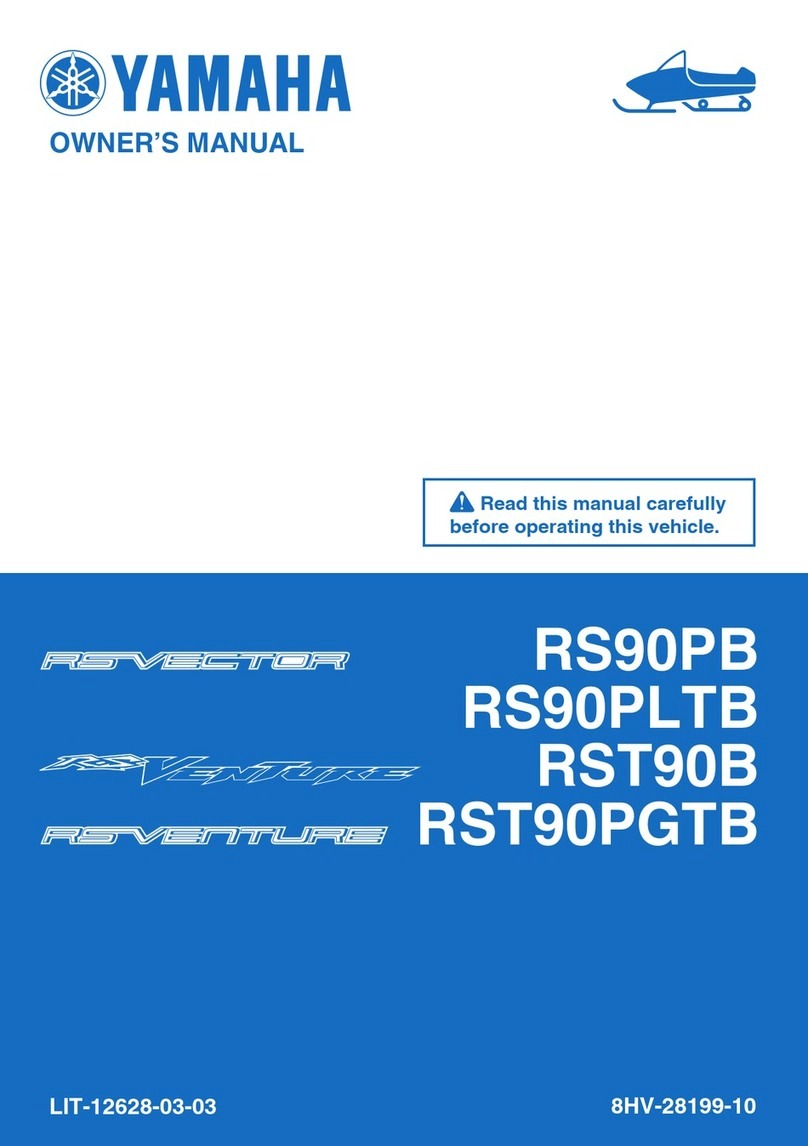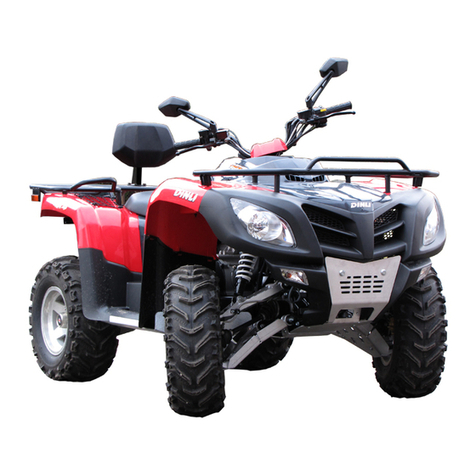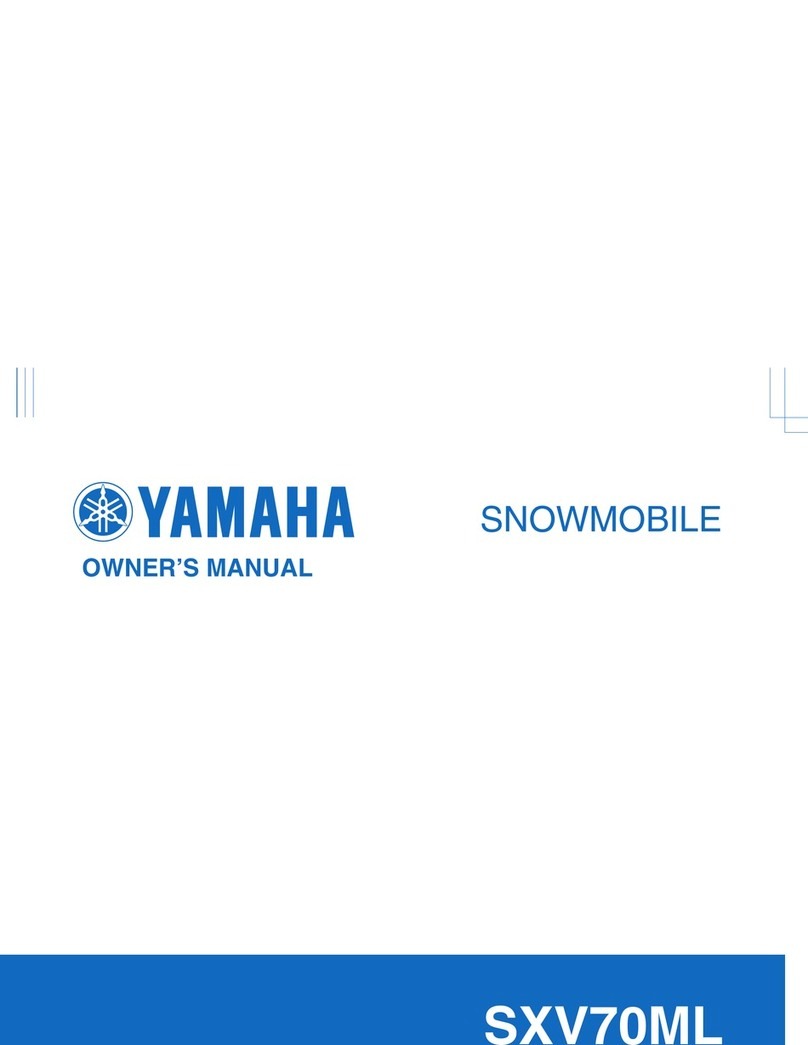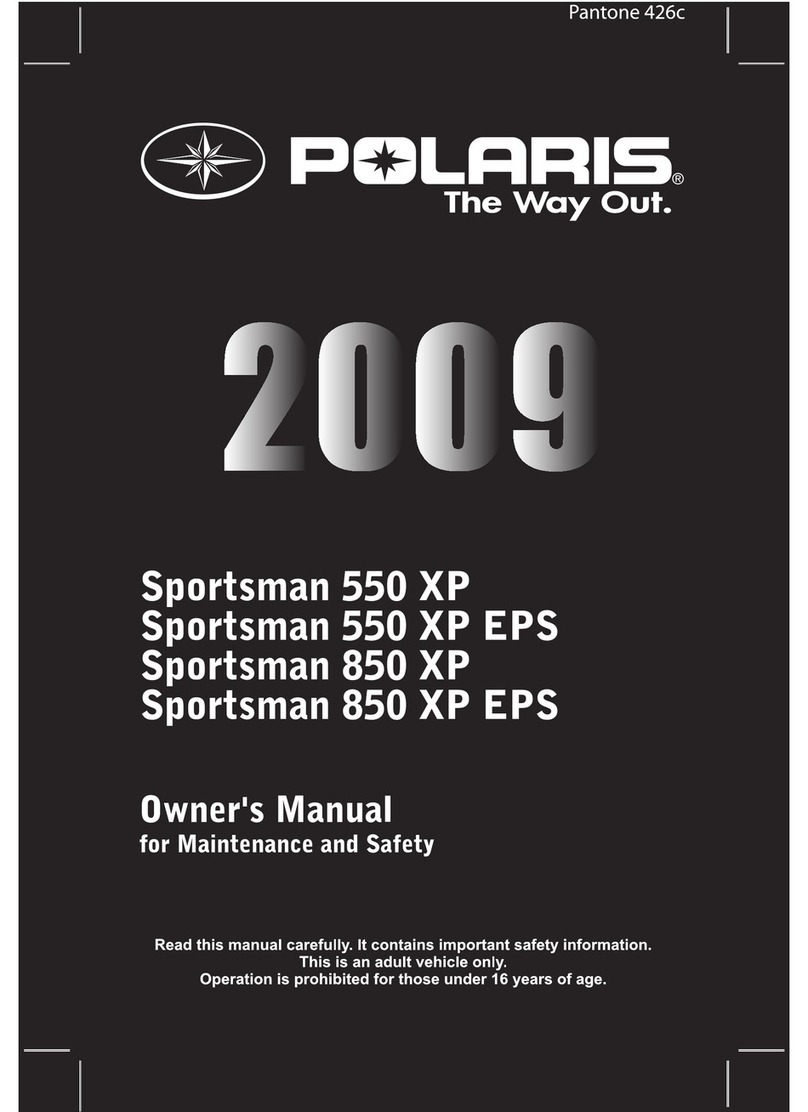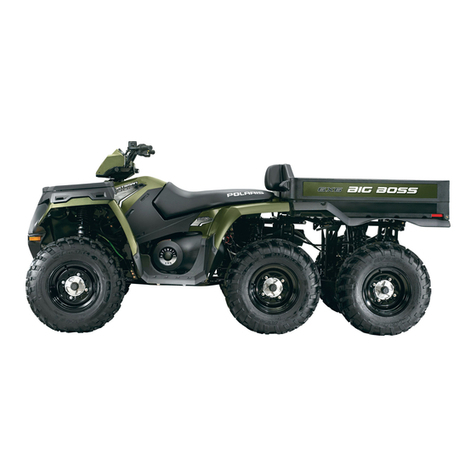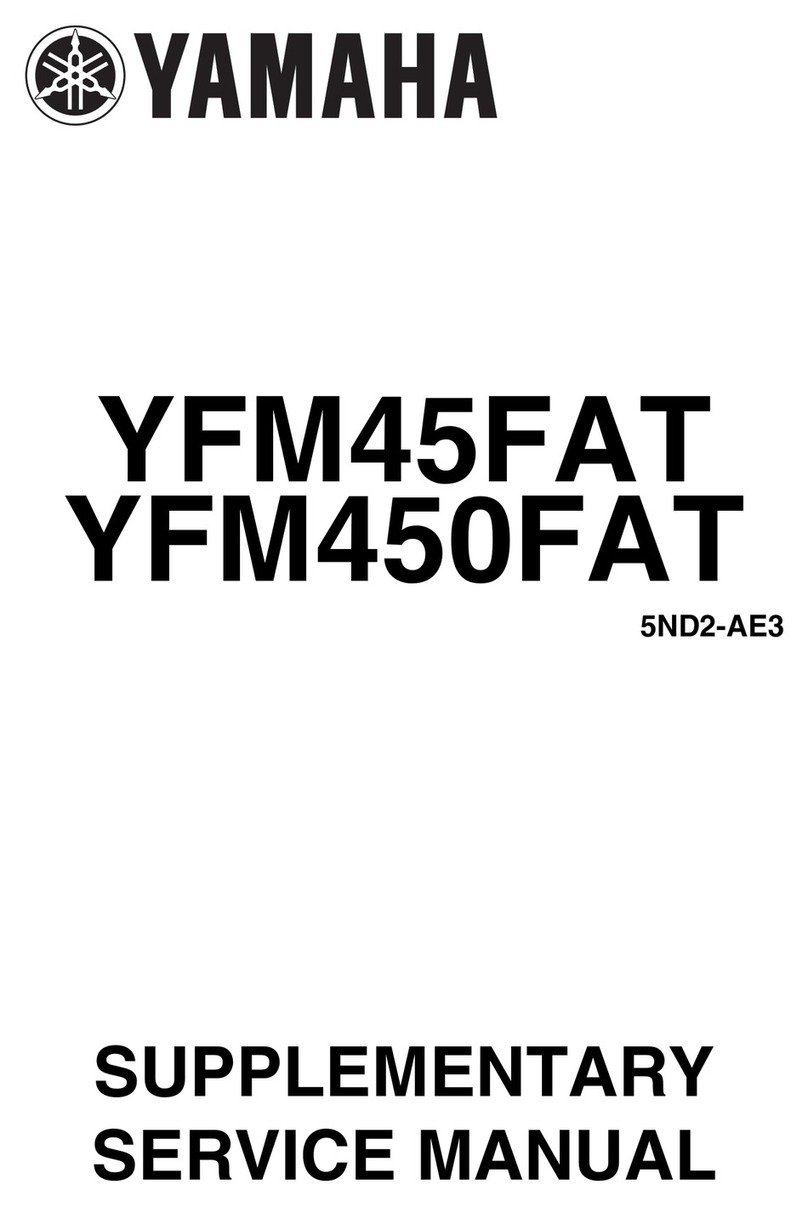-5-
- Verifications to be made before starting the
machine ...................................................................................20
Front and rear brakes ..................................................20
Fuel..............................................................................21
Cooling system ............................................................22
Chain ...........................................................................23
Throttle grip..................................................................23
Lights ...........................................................................23
Tyres............................................................................23
- Using the QUAD ...................................................................24
Starting the engine.......................................................24
Changing gears ...........................................................25
Driving the vehicle .......................................................26
Stopping the engine.....................................................26
Running-in the engine..................................................27
Engaging the reverse gear ..........................................27
Parking on slopes ........................................................27
- Driving the QUAD. Practical recommendations ................28
Become familiar with your QUAD ................................28
Drive with care and common sense.............................28
How to turn your QUAD. ..............................................29
Up hills .........................................................................30
Down hills ....................................................................30
Crossing slopes ...........................................................30
Going across shallow water.........................................31
Riding on rough terrain ................................................31
Sliding and skidding.....................................................31
CONTENT
- Presentation............................................................................3
- General warnings ...................................................................4
- Contents..................................................................................5
- Specifications .........................................................................7
- Information about your safety...............................................8
- Important information ..........................................................10
Identification number....................................................10
- Location of components......................................................12
- The main parts of the QUAD................................................14
Ignition key...................................................................14
Starter pedal. ...............................................................14
Lights ...........................................................................14
Emergency lights .........................................................15
Throttle grip..................................................................15
Clutch lever..................................................................15
Front brake lever..........................................................16
Rear brake pedal .........................................................16
Emergency stopping ....................................................16
Reverse gear push button............................................17
Shift pedal....................................................................17
Starter ..........................................................................17
Fuel tank cap ...............................................................17
Fuel tap........................................................................18
Seat..............................................................................18
Front guard ..................................................................18
Rear guard...................................................................19
Footrest assembly........................................................19
Foot protection.............................................................19

